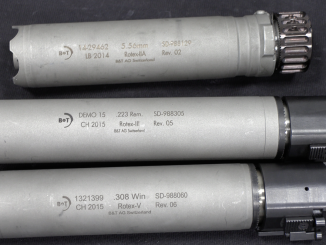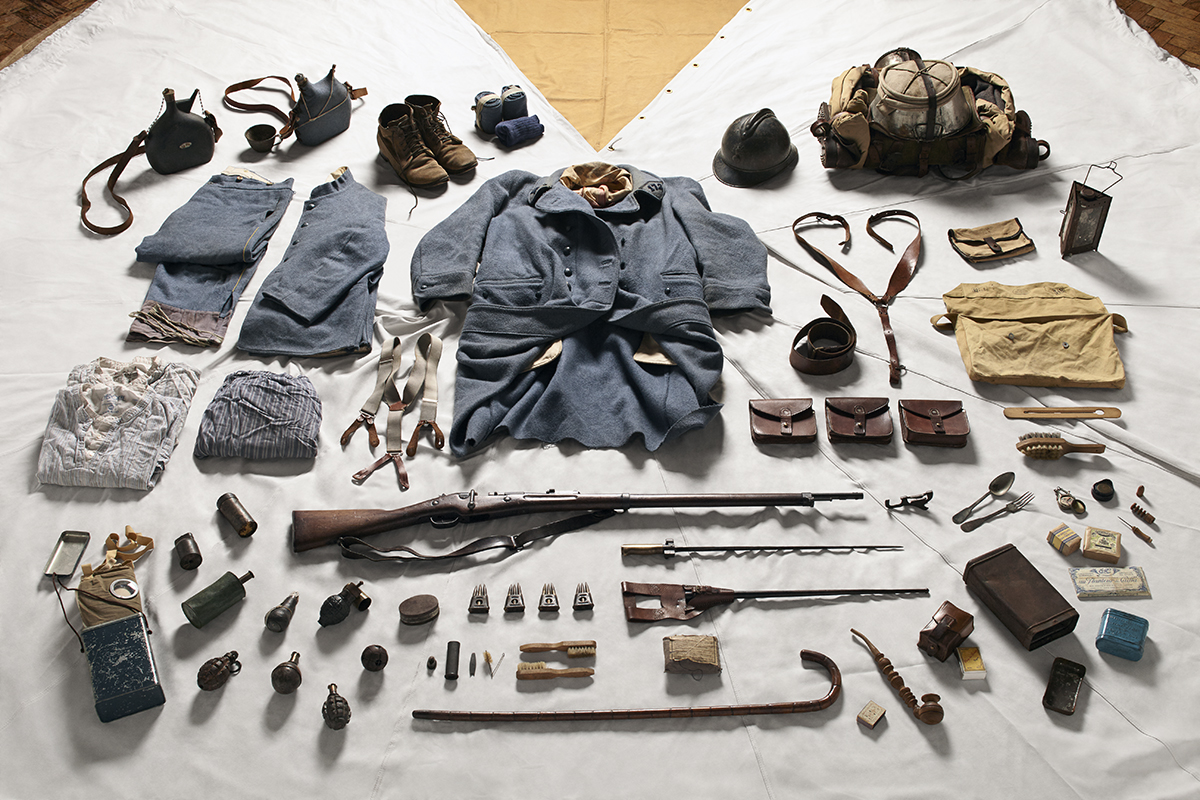https://youtu.be/BC7awTeuqRU
This Pauly shotgun is lot #1346 at Morphy’s April 2019 auction.
Samuel Johannes Pauli was born outside Bern, Switzerland in 1766, and became an engineer of wide interests. Among them were bridge design, passenger-carrying balloons (he would work seriously on a 15-20 passenger balloon service between London and Paris later in life), and firearms. Only a few years after Forsyth’s invention of fulminate priming, Pauly would become the first to use it in a fully self-contained cartridge. He patented this invention in Paris in 1812, having moved there in 1802 in pursuit of financing for his many grand projects (going then by the name Jean Samuel Pauly).
Pauly’s cartridge was a multi-part affair with a rimmed brass base containing a fulminate powder, connected to a paper or cardboard cartridge body which held a charge of regular gunpowder and the shot or ball to be fired. It was an expensive system, but contained all the necessary elements of a modern cartridge.
Pauly would move to England in 1814 (then taking the name Samuel John Pauly) in pursuit of aviation inventions, although he continued to tinker on his firearms design and filed to additional patent improvements. He died in London in 1821, and his name and work became rather obscure. His former apprentices would carry on his legacy in their own work – Nicolaus Dreyse would produce the needle fire system of Dreyse rifles used by the Prussian military, and Casimir Lefaucheux would create the pinafore system based on Pauly’s designs. Lefaucheux in fact became owner of the company in 1827, and with his son would provide the most direct link between Pauly’s design and the modern metallic cartridge.




Cardboard shotgun shells, just insert, close breach, and two bangs! Far ahead of the usual “rip with teeth, pour, and mash into gun with rammer” paper cartridges at the time!
That being said, it is quite mind-boggling that today shotgun shell with metallic bases and plastic bodies are commonly accepted, while rifle cartridge of such construction are virtually unheard of.
Steyr IWS 2000: https://modernfirearms.net/en/sniper-rifles/large-caliber-rifles/austria-large-caliber-rifles/steyr-iws-2000-eng/ used cartridge build in this way, with metal BASE-PIECE and plastic CASE, thus showing feasibility of using such case in high-pressure using weapon (anti-tank “rifle”).
Maybe the issue is crafting such a case for small caliber items. The irrational fear I can predict is that of melted plastic stuck in the chamber of an overheated rifle.
These might be ok, says you can get 30% weight savings; theres a promo vid, looks good.
https://www.thefirearmblog.com/blog/2019/04/04/usmc-to-by-2-4-million-rounds-of-polymer-cased-50-calibre-ammunition/
That’s a daring leap; first major military use in a closed-bolt machine gun without quick-change barrels. The toughest heat test.
Interesting weapon, i’d forgotten about that also… So it is a Forgotten weapon for me! Nitinol might be able to be used in long cases like that as a forward detonator “as oppose a flash tube, or other ideas” actuation of the primer could change the shape of a Ni-ti piece via heat, which could compress a (fulminate etc) primer further away, as said piece would squish it or etc and make it ignite.
Actually the USMC is going to buy a batch of 2,4 million EA of partially plastic cased 12,7*99 mm cartridges.
https://www.fbo.gov/index.php?s=opportunity&mode=form&id=e1c0003396202082e3b9a46dba4f2791&tab=core&tabmode=list&=
I believe the US military recently developed a polymer shell casing for future use/testing. I could be wrong though.
Imagine military of the time was interested in this….. how would look like Battle of Waterloo?!
Not good. The Pauly system tends to be fragile and does not react well to things like mud, rapid fire, and the odd soldier’s boot.
There was also the cost factor. Pauly’s guns were not cheap. You (or a military storeskeeper) could buy a dozen flintlock or percussion muskets for the cost of one of his double shotguns.
Pauly sold his system as sporting arms. Keep in mind that at the time, “sporting” meant “nobility”, even or especially in Napoleonic France.
The nobility hunted game either from horseback or stands, on their private preserves. They could afford expensive sporting arms for their recreations, and the service conditions were not onerous for the weapon or the user. And even with all this, Pauly’s guns were not big sellers, however advanced they were for the time.
Pauly was an excellent inventor, but his understanding of his market was not as sophisticated.
cheers
eon
It could have been feasible for limited use as a sniper weapon, like the Austrian compressed air-bottle gun. Those guys take care of their weapons.
That was in 1812, not 2012 , one can forgive some imperfection for being 200 years ahead. Additionnally very few people had access to guns and such in perticular at this time. You can criticize Boutet or Ferguson in current time.
Exactly the same. Patented in 1812, there are no way it can be on the battlefields in 1815. Take some time to be aproved. Take some time to make the tooling, to produce it, distribute it, train the troops and all this kind of things.
Spellchecker is the pits! I assume that you meant “pinfire” rather than “pinafore”
I had to get around that by spelling it as “pin-fire.”
Proof reading anyone?
Yes, that would help. I had to learn that when doing essays on electric typewriter while everyone else had their own personal laptops in junior high school. This isn’t a joke, I was mocked for NOT having a computer back then. I retorted that I didn’t require a machine to correct my spelling errors, simply because I consulted an actual dictionary to correctly spell any advanced words I could not completely memorize. I’d like to see the next generation of kids beat THAT when the lights go out for a week or two!
“when the lights go out for a week or two!”
Keep calm, already errors were made even in pre-transistor era. Take for example
https://en.wikipedia.org/wiki/Wicked_Bible from 17th century.
Electric typewriters working just as well when the electricity goes out… but yeah, language skills can be used with natural materials. Scratching text in the dirt, on bark, stone, whatever. Typing on touchscreen doesn’t help spelling compared with on a keyboard, due to predictive text and inherent inaccuracy of the rubbish touchscreen keyboard. That everyone keeps choosing…
I’ve worked for years as both a freelancer, and an editor working with freelancers, and the best advice I can give is, “set it aside for an hour, then read it one more time before you submit it…”
If writers would proof their own work, it would eliminate 90% of the errors I have to find and correct.
I must admire, that it is quite new experience for me to learn new word due to spell checker malfunction…
Ignore spell-checker. Just write as you wish; your English stands to any criticism AFAICT.
Actually Lefeaucheux also designed clothing ….
So thanks to this we came across origin of metallic cartridge. Simply stunning!
Pinafore system? Really?
Mistake was done, but this one luckily is evident.
Unlike one of S.Seymour done yet back in 1977:
http://www.strangehistory.net/2013/12/21/carter-poland-and-the-translator/
during U.S.President Carter visit in Warsaw, Poland he translated his speech in way implying that U.S.President is seeking political asylum in Warsaw.
In London, Pauly associated with George Daws, a well known gunmaker. You can make a really good case that the invention of the percussion cap as we know it was down to these two (whatever Joe Manton said)
And they likely had it before Joshua Shaw. But as Dr. John D. Clark said in Ignition!- An Informal History of Liquid Rocket Propellants (Rutgers Univ. Press, 1971), it’s not at all unusual for three or four experts in any field to come up with the same idea at about the same time.
cheers
eon
Given the concept of fulminates, the modern cartridge is self evident. It’s always seemed odd to me that it took 50 years to be seriously developed. Especially since as you point out we know that people who developed inferior systems knew the Pauly idea well.
The system was far ahead of its time (a saying often used but very applicable here), because the consistent manufacture of cartridges was teh problem. In napoleonic times it was pretty much still craftsmen doing nearly everything manually. See the later problems various cartridge systems had in their development and use.
If we have to see the Pauly duck, you have to see the dentist buffalo-
http://i.imgur.com/nmNetpH.jpg
Ian doesnt mention it but there was a version of this gun that used compressed air to ignite the cartriges
Lifting up the breech block cocked 2 pistons as in a modern spring piston air rifle .
The air when forced through a small hole was hot enough to ignite the powder charge in the cartrige did he use fulminate also who knows
Daisy used this system in their VL caseless .22 cartriges in the 60s
I forgot about that Daisy system, thanks.
Might be ok in a “metal storm” type arrangement; a stack of projectiles in the barrel as per, but theres a single Nitinol wire running through each. Inside each projectile/case theres… Well party popper insides, in essence “the pop bit” each of these is attached to the rear of the round in a manner similar to said popper, but the tails of these (what you’d pull in a party) are attached to the Ni-Ti: Daisy system actuated, heat shrinks the wire; pops all the poppers, which ignites the propellent.
Non electronic way of doing it perhaps, just a thought.
Hmmm…..sounds like a lot of hot air..
If the construction of the cylinders was done wrong, the whole idea could even backfire into your face (I hope not literally).
“sounds like a lot of hot air”
Daisy ignition system actually use principle which was known at least from end of 18th century, see: https://en.wikipedia.org/wiki/Fire_piston#History
I had a Daisy VL back in 1969. Major lag time on firing. No grooves for a scope, and it was built like a cheap BB gun, not a .22. And if a round didn’t fall back out of the chamber, there was no way of unloading it without firing it, short of carrying a cleaning rod. I still have some ammo around for it. I did see one recently at Mackey’s Gun Shop in Jamesville, NC a few months ago. I don’t remember the price, but I wasn’t tempted.
With the daisy system there was a metal ball bearing that recoiled into the air exit hole to prevent just that
Thanks for the help on the Daisy system!
This is the second “centerfire before centerfire” that Ian has presented, the other being the Gavelot rifle which is sort of a “horizontal pinfire,” quite a bit later than the Pauly. I guess it just looks obvious now, and didn’t look obvious then.
Why has the video been taken down for copyright? How can someone claim this for copy right violation.
Perhaps a new tactic by the tories?